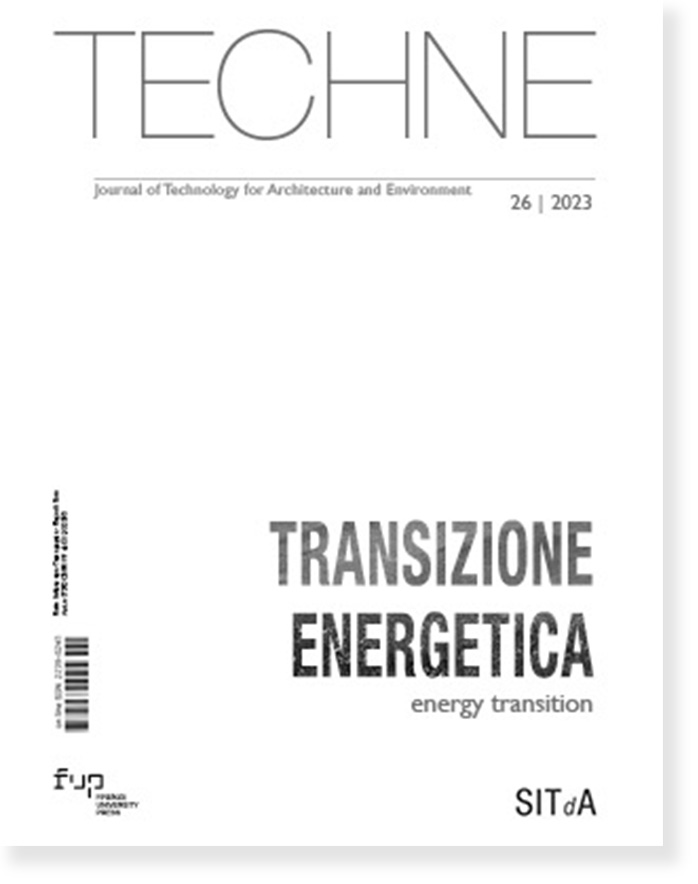Published 2023-10-31
Keywords
- Technological design,
- Energy transition,
- Urban sustainability,
- Urban design,
- Innovation
How to Cite
Copyright (c) 2023 Lidia Errante, Alberto De Capua

This work is licensed under a Creative Commons Attribution 4.0 International License.
Abstract
In the contemporary context of the polycrisis, ways and criteria for sustainable urban transformation are discussed that shift the needle of ecological transition from building to city, towards energy self-sufficiency and social self-determination. Alternative forms of management, containment and production of clean and accessible energy from renewable sources are explored that have feedback in terms of process, design and social innovation. The paper aims to highlight the active and adaptive dimensions of technological design in its ability to support and promote behaviour favouring sustainable environmental transition.
Downloads
References
Dessì, V., Rogora, A. (2005) Il comfort ambientale negli spazi aperti. Edicom Edizioni.
Enea (2022) Rapporto annuale efficienza energetica 2021.
Errante, L. (2019) “Public space and its challenges. A palimpsest for urban commons” in: Benincasa, Neri, Trimarchi (Eds.), Art and Economics in the City (191-204). Bielefeld: transcript Verlag. https://doi.org/10.14361/9783839442142-012
Friedman, Y. (2012) Alternative energetiche. Breviario per l’autosufficienza locale. Bollati Boringhieri.
Latouche, S. (2006) La scommessa della decrescita. Feltrinelli.
Latouche, S., Faletra, M. (2019) Hyperpolis. Architettura e capitale. Meltemi.
Legambiente (2022) Comunità rinnovabili.
Manzini, E. (2021). Abitare la prossimità. Idee per la città dei 15 minuti. Egea.
Ottone, F. e Cocci Grifoni, R. (2017) Urban Technologies. Built and unbuilt spaces for open spaces configurations. LISt Lab.
Ratti, C. (2014) Architettura Open Source. Verso una progettazione aperta. Einaudi.
Sendra, P. e Sennett, R. (2022). Progettare il disordine. Idee per la città del XXI secolo. Treccani.





